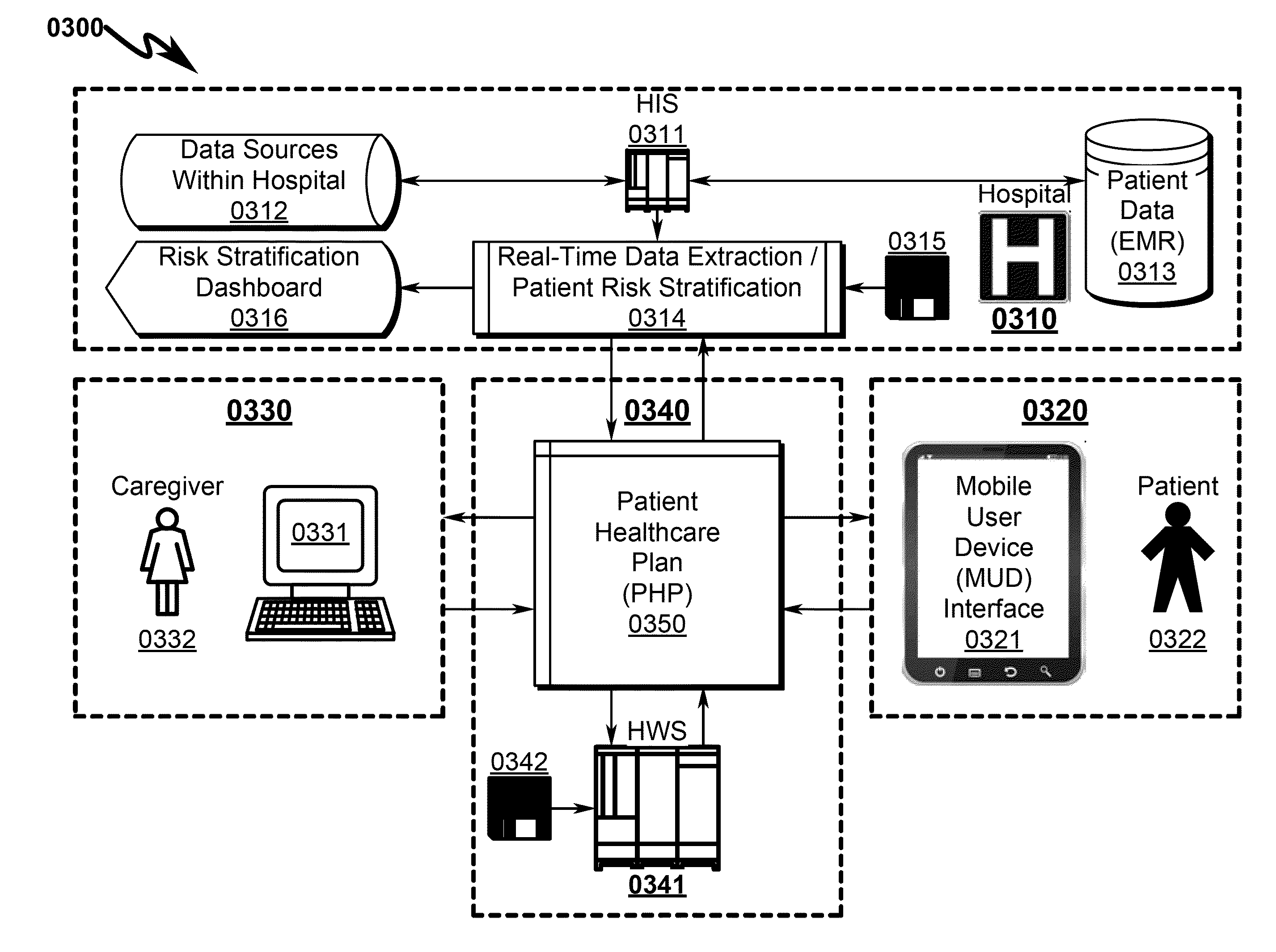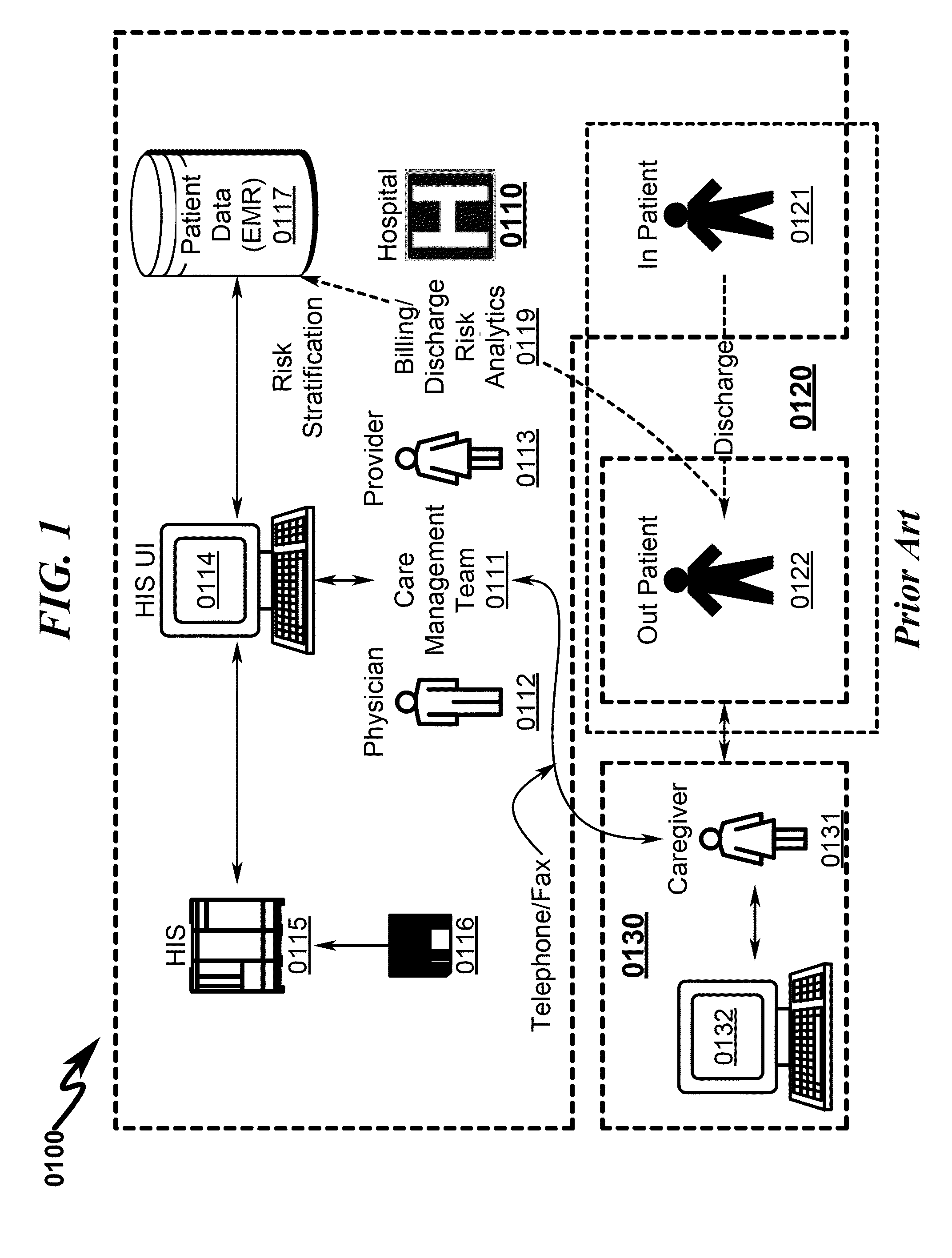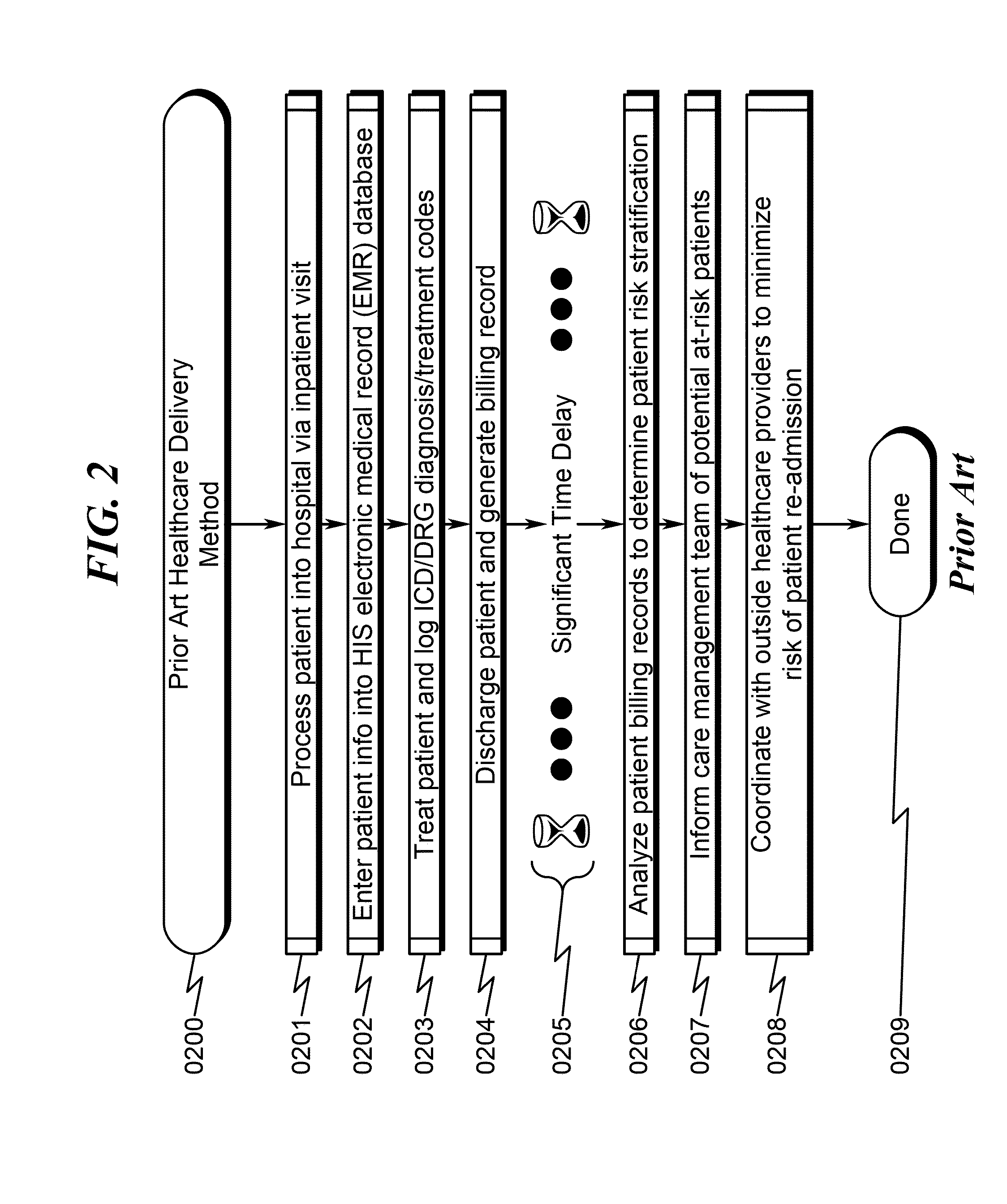Healthcare delivery system and method
a technology for health care and delivery systems, applied in healthcare informatics, data processing applications, therapies, etc., to achieve the effect of reducing the risk of patient re-admission
- Summary
- Abstract
- Description
- Claims
- Application Information
AI Technical Summary
Benefits of technology
Problems solved by technology
Method used
Image
Examples
embodiment
Preferred Embodiment Method Summary
[0313]The present invention preferred exemplary method embodiment anticipates a wide variety of variations in the basic theme of implementation, but can be generalized as a healthcare delivery method, the method operating in conjunction with a healthcare delivery system comprising:[0314](a) hospital information system (HIS);[0315](b) healthcare web server (HWS);[0316](c) mobile user interface device (MUD);[0317](d) medical instrumentation device (MID); and[0318](e) computer communication network (CCN);[0319]wherein[0320]the HWS is configured to communicate with the HIS via the CCN;[0321]the HIS is configured to extract real-time patient data from a variety of patient data sources in the hospital;[0322]the HIS is configured to transmit the real-time patient data to the HWS;[0323]the HWS is configured to communicate with the MUD via the CCN;[0324]the MUD is configured to present audio / video information to a patient;[0325]the MUD is configured to acce...
PUM
 Login to View More
Login to View More Abstract
Description
Claims
Application Information
 Login to View More
Login to View More - R&D
- Intellectual Property
- Life Sciences
- Materials
- Tech Scout
- Unparalleled Data Quality
- Higher Quality Content
- 60% Fewer Hallucinations
Browse by: Latest US Patents, China's latest patents, Technical Efficacy Thesaurus, Application Domain, Technology Topic, Popular Technical Reports.
© 2025 PatSnap. All rights reserved.Legal|Privacy policy|Modern Slavery Act Transparency Statement|Sitemap|About US| Contact US: help@patsnap.com



